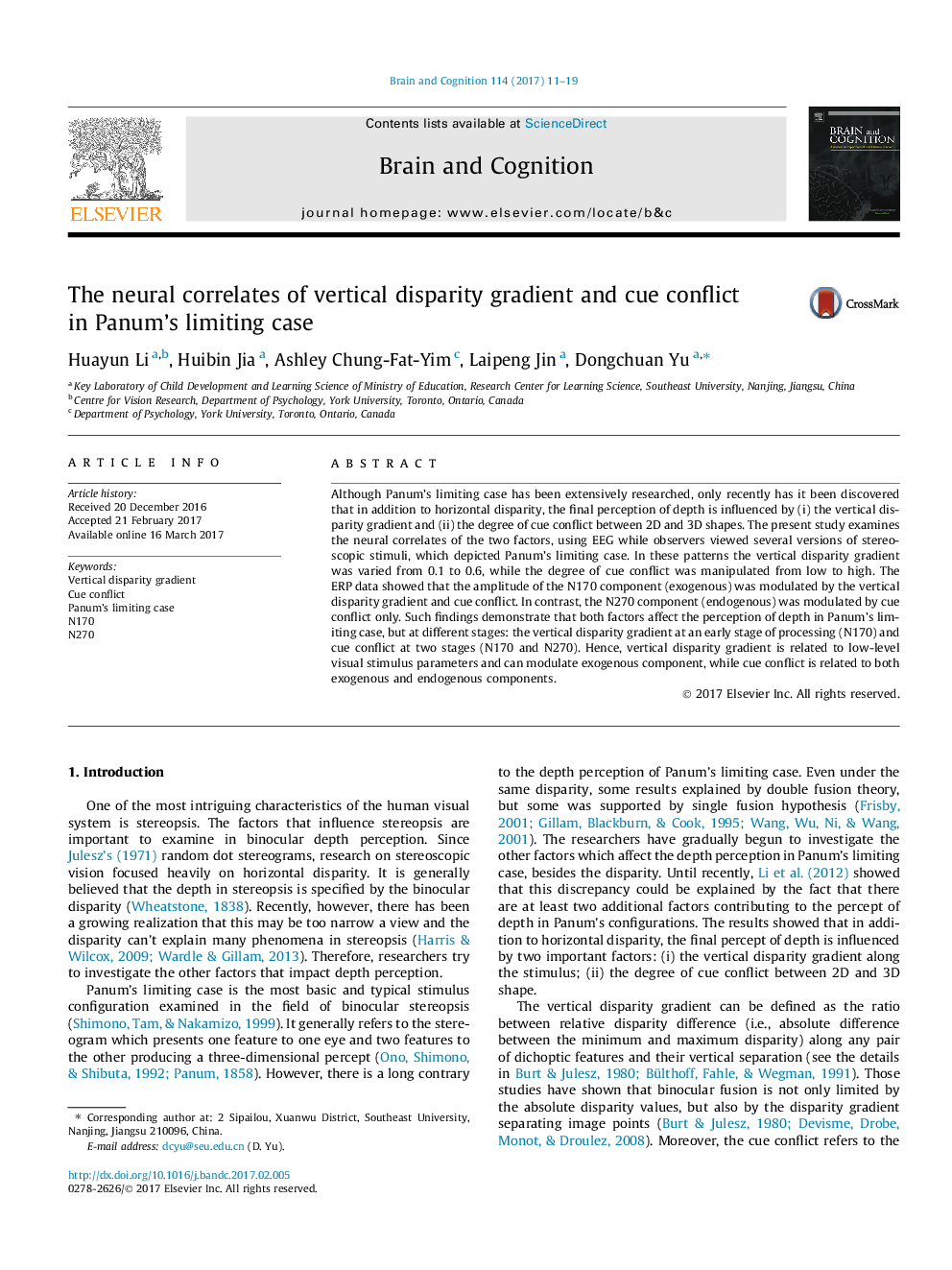| Article ID | Journal | Published Year | Pages | File Type |
|---|---|---|---|---|
| 5041130 | Brain and Cognition | 2017 | 9 Pages |
â¢We manipulated the vertical disparity gradient and degree of cue conflict in Panum's limiting case stimuli.â¢EEG recordings were made while observers viewed these patterns and indicated their percepts.â¢The vertical disparity gradient influenced the early (N170) component of the ERP.â¢The effect of cue conflict was seen at early and late processing stages (N170 and N270).
Although Panum's limiting case has been extensively researched, only recently has it been discovered that in addition to horizontal disparity, the final perception of depth is influenced by (i) the vertical disparity gradient and (ii) the degree of cue conflict between 2D and 3D shapes. The present study examines the neural correlates of the two factors, using EEG while observers viewed several versions of stereoscopic stimuli, which depicted Panum's limiting case. In these patterns the vertical disparity gradient was varied from 0.1 to 0.6, while the degree of cue conflict was manipulated from low to high. The ERP data showed that the amplitude of the N170 component (exogenous) was modulated by the vertical disparity gradient and cue conflict. In contrast, the N270 component (endogenous) was modulated by cue conflict only. Such findings demonstrate that both factors affect the perception of depth in Panum's limiting case, but at different stages: the vertical disparity gradient at an early stage of processing (N170) and cue conflict at two stages (N170 and N270). Hence, vertical disparity gradient is related to low-level visual stimulus parameters and can modulate exogenous component, while cue conflict is related to both exogenous and endogenous components.
